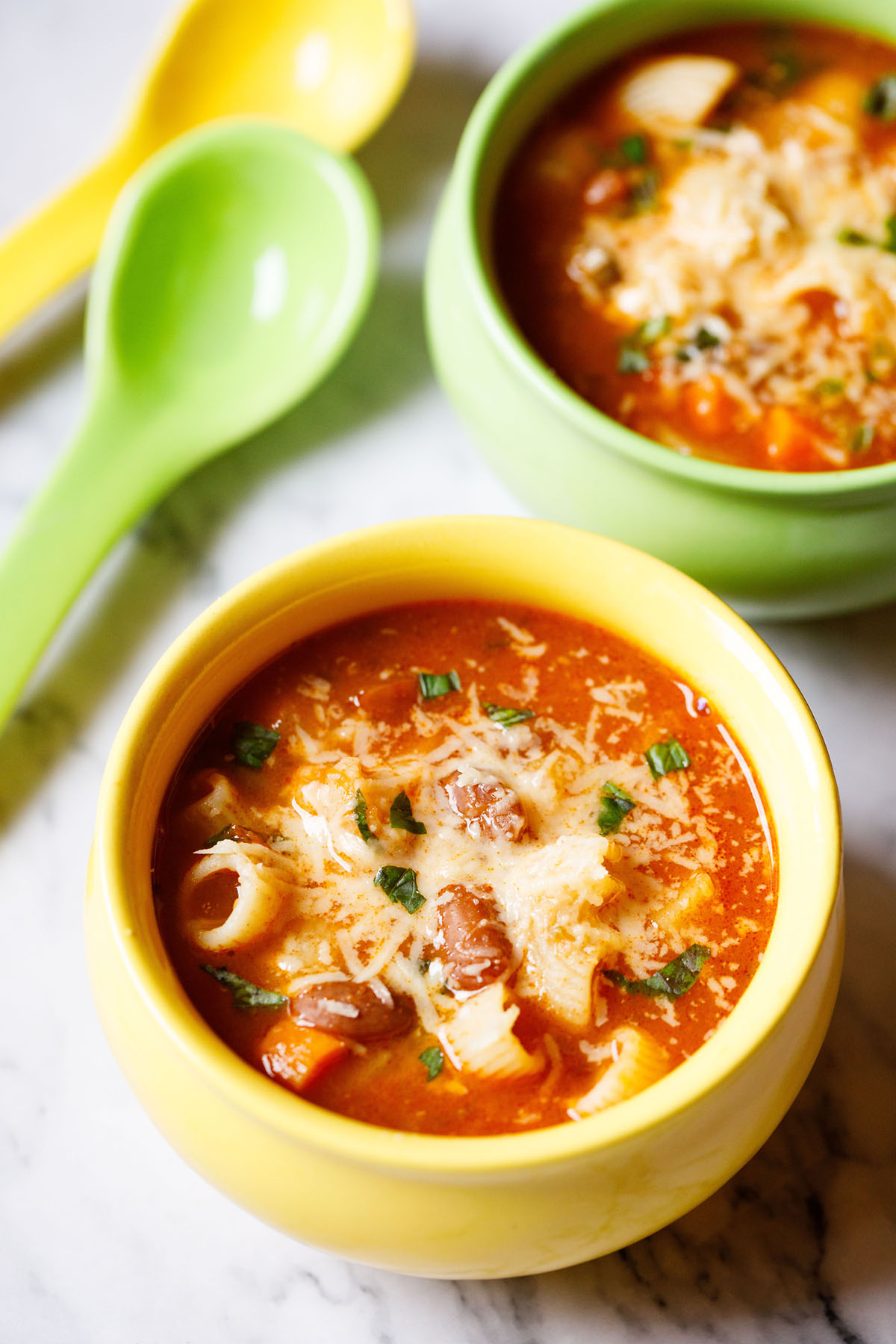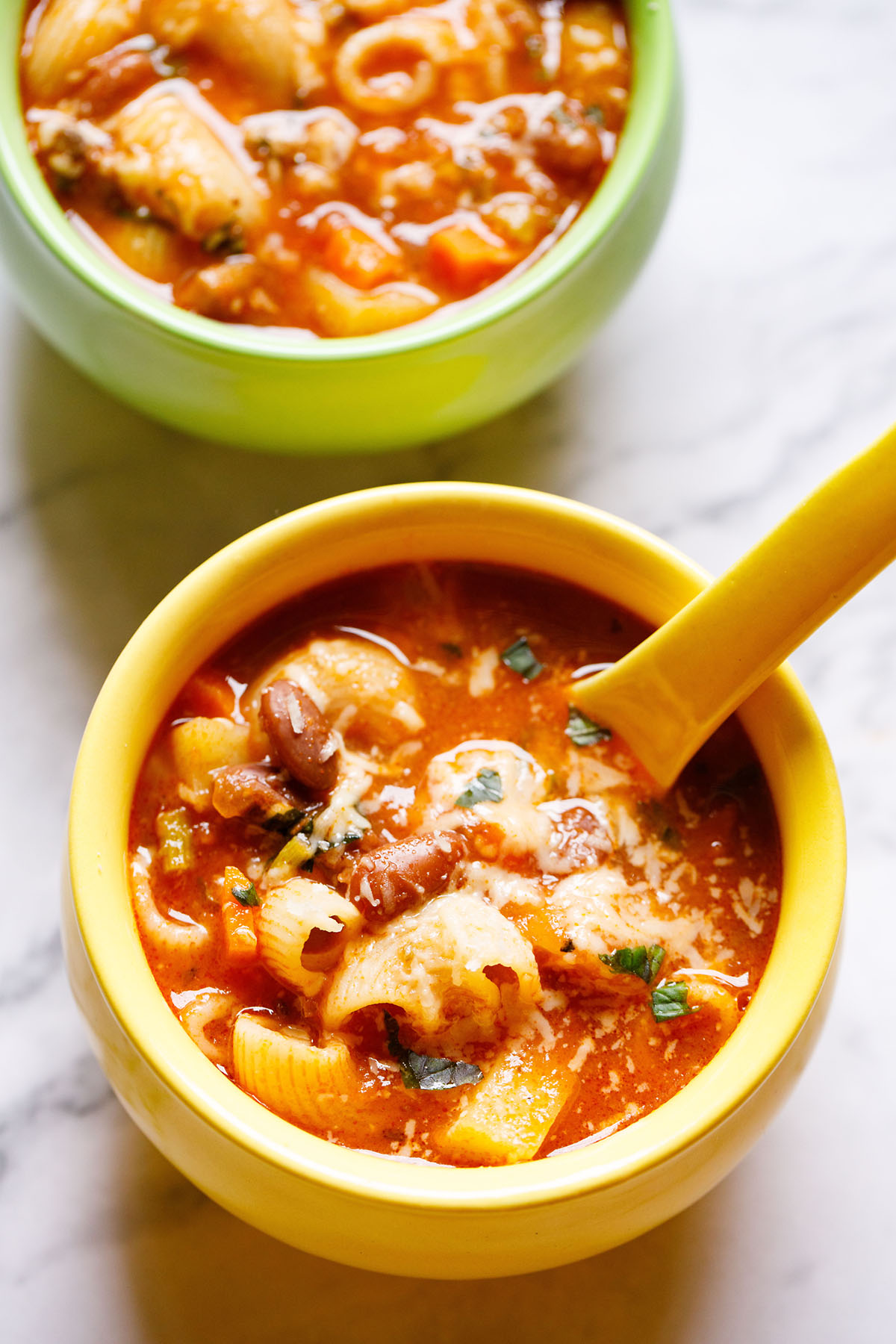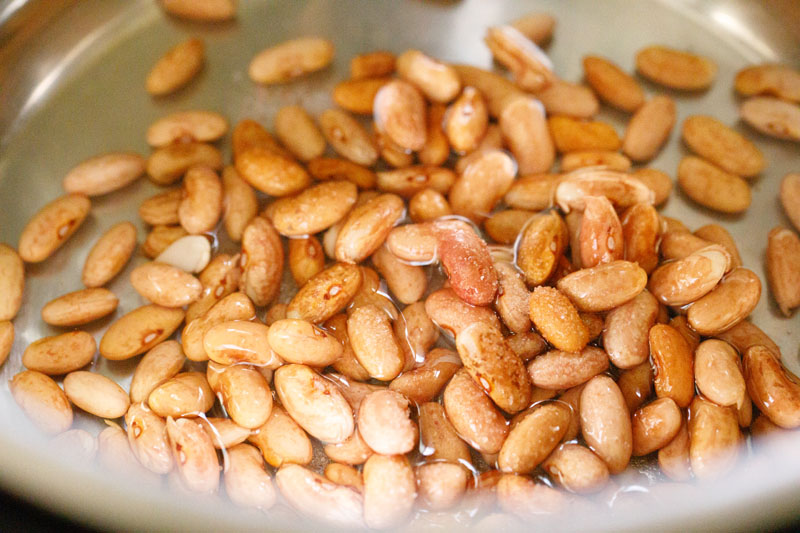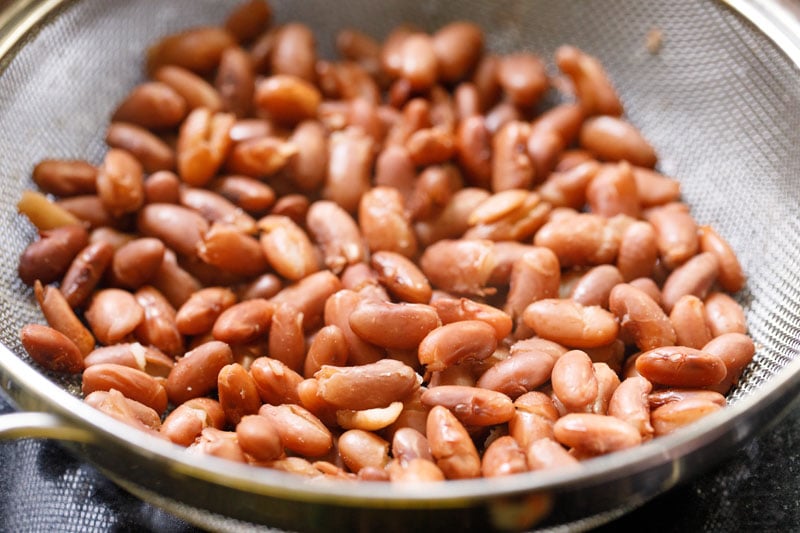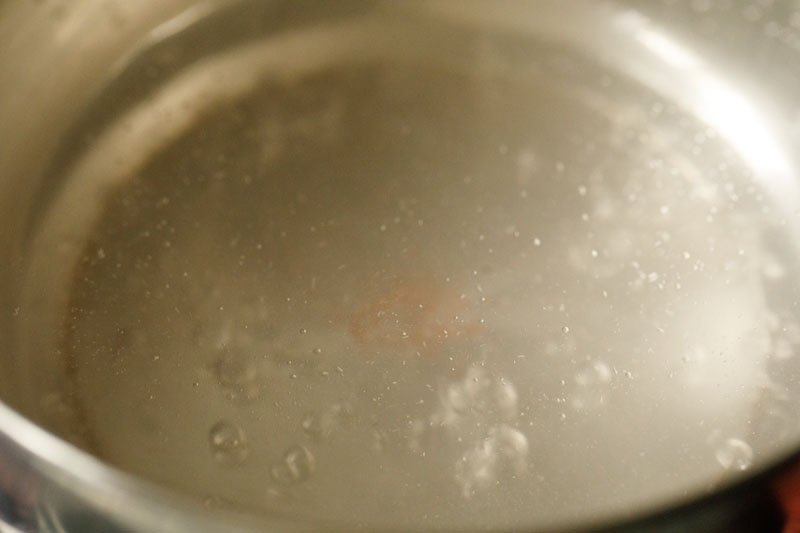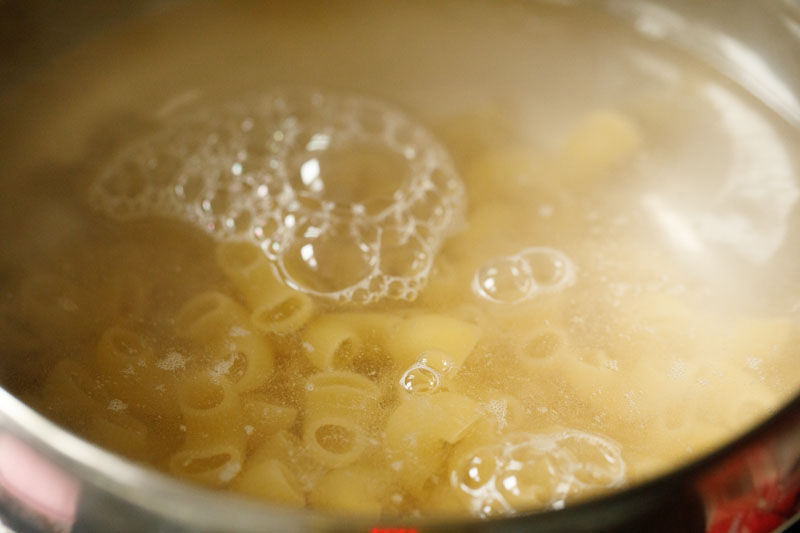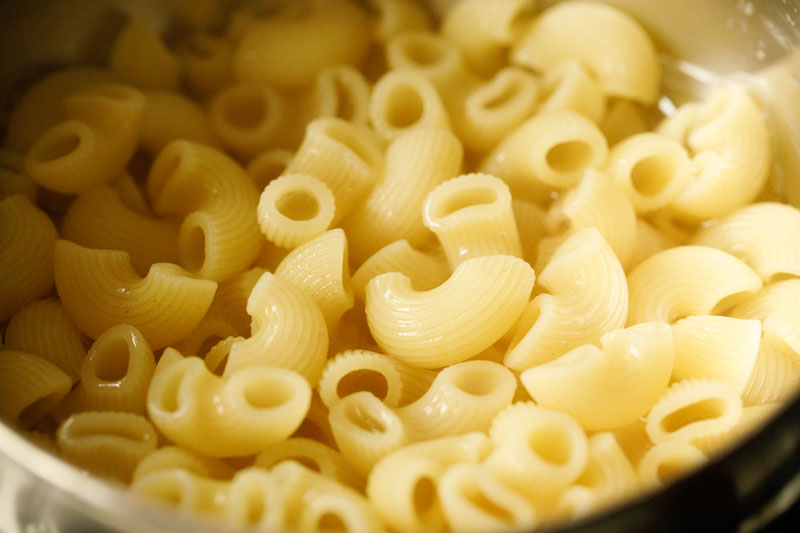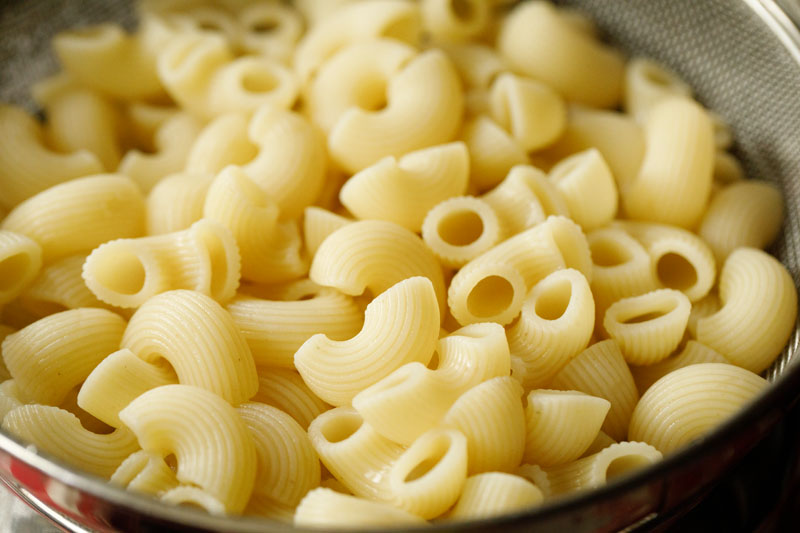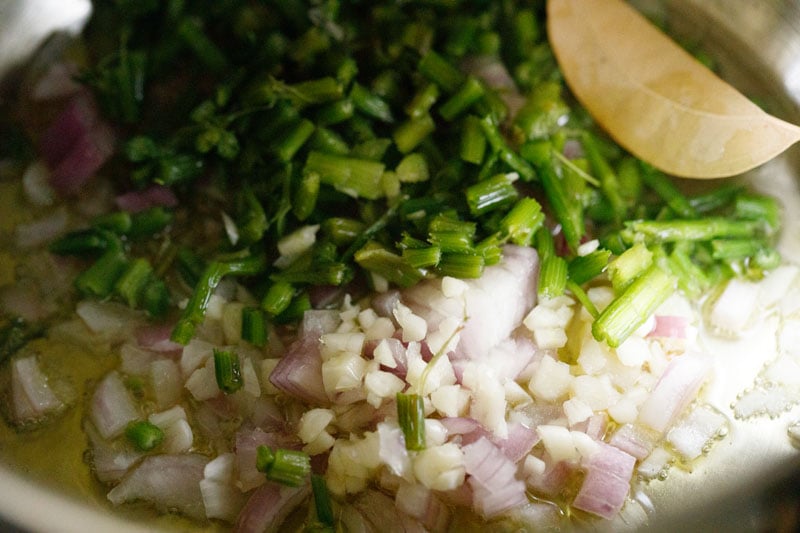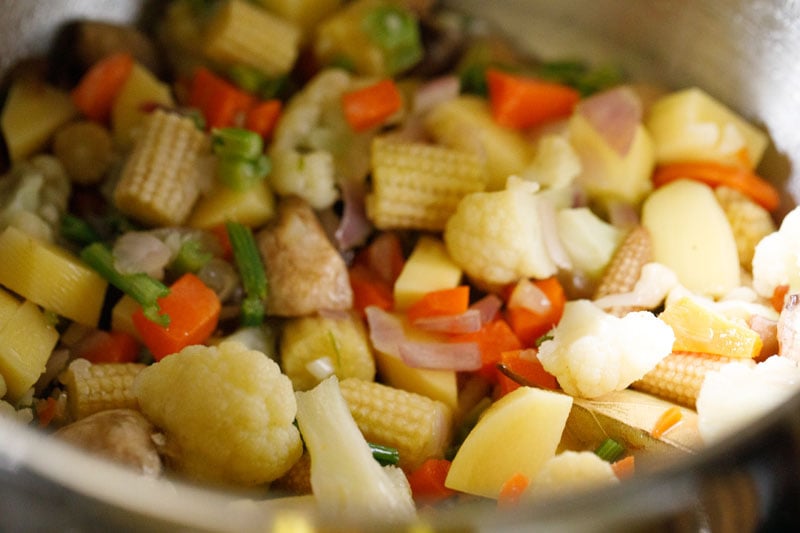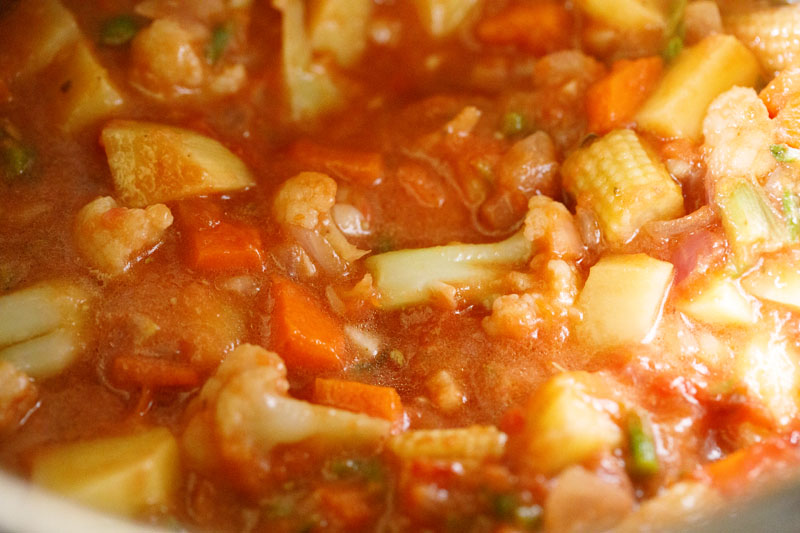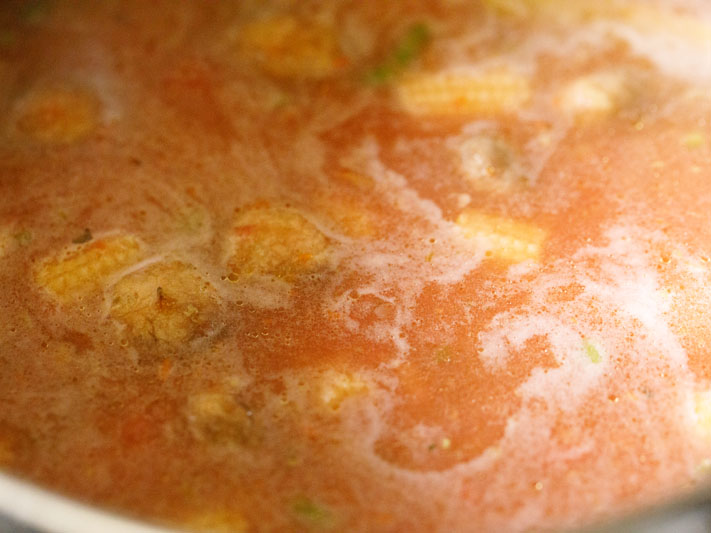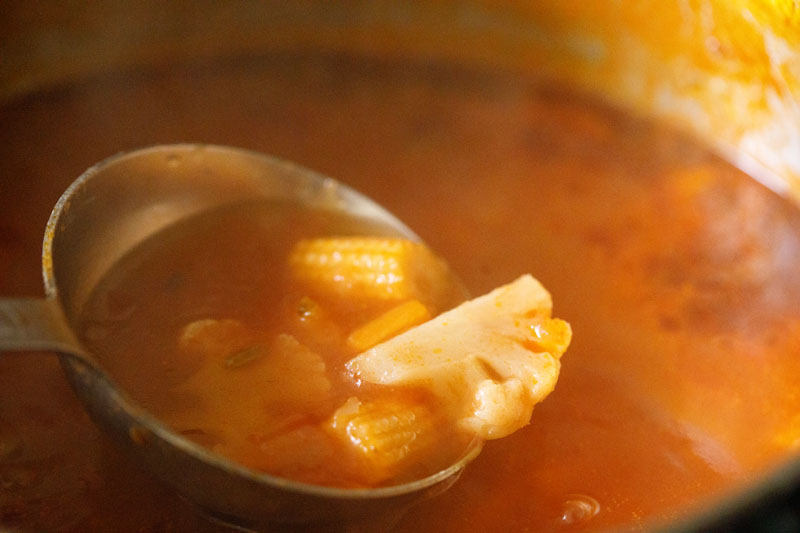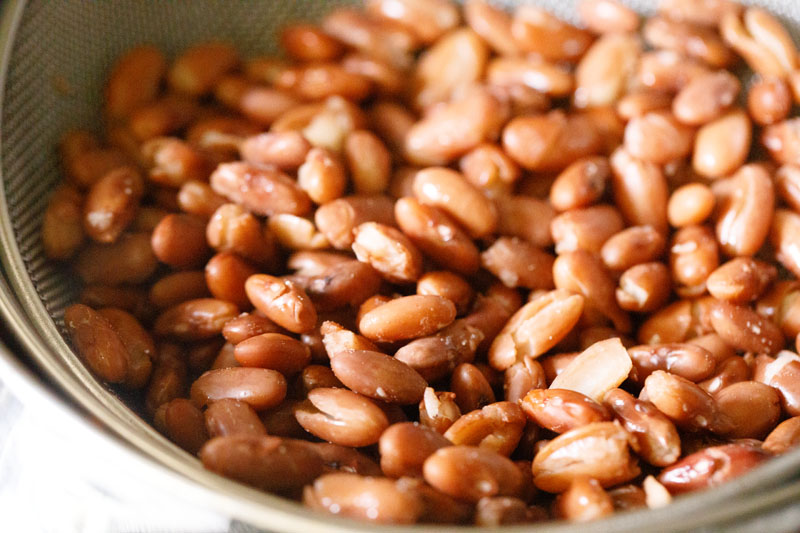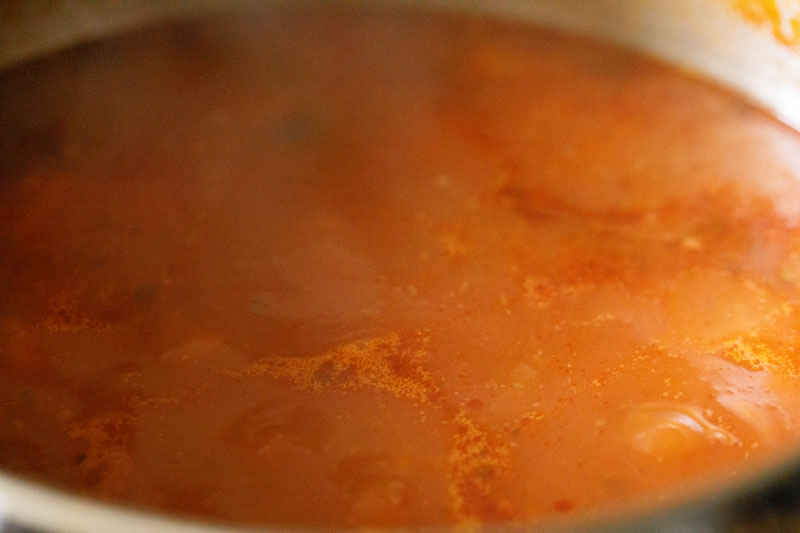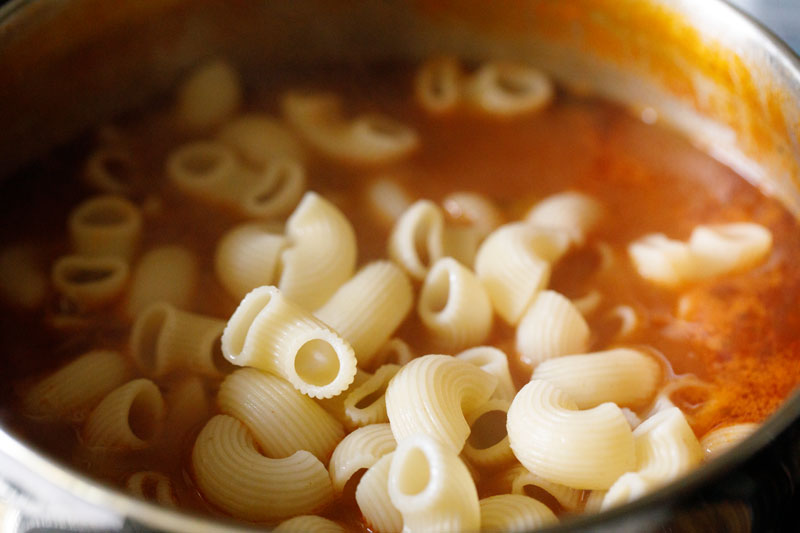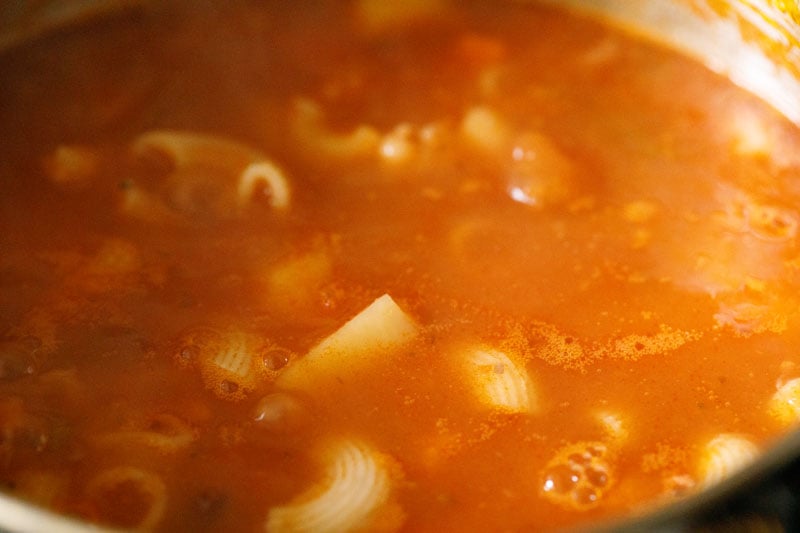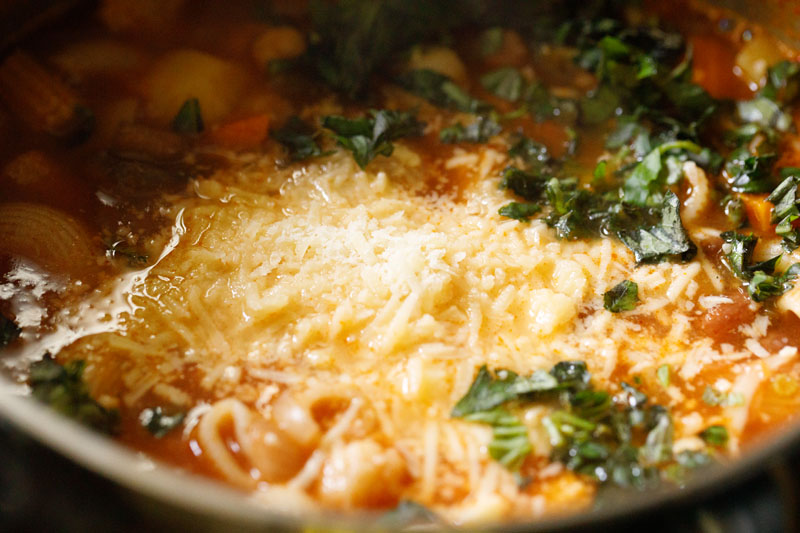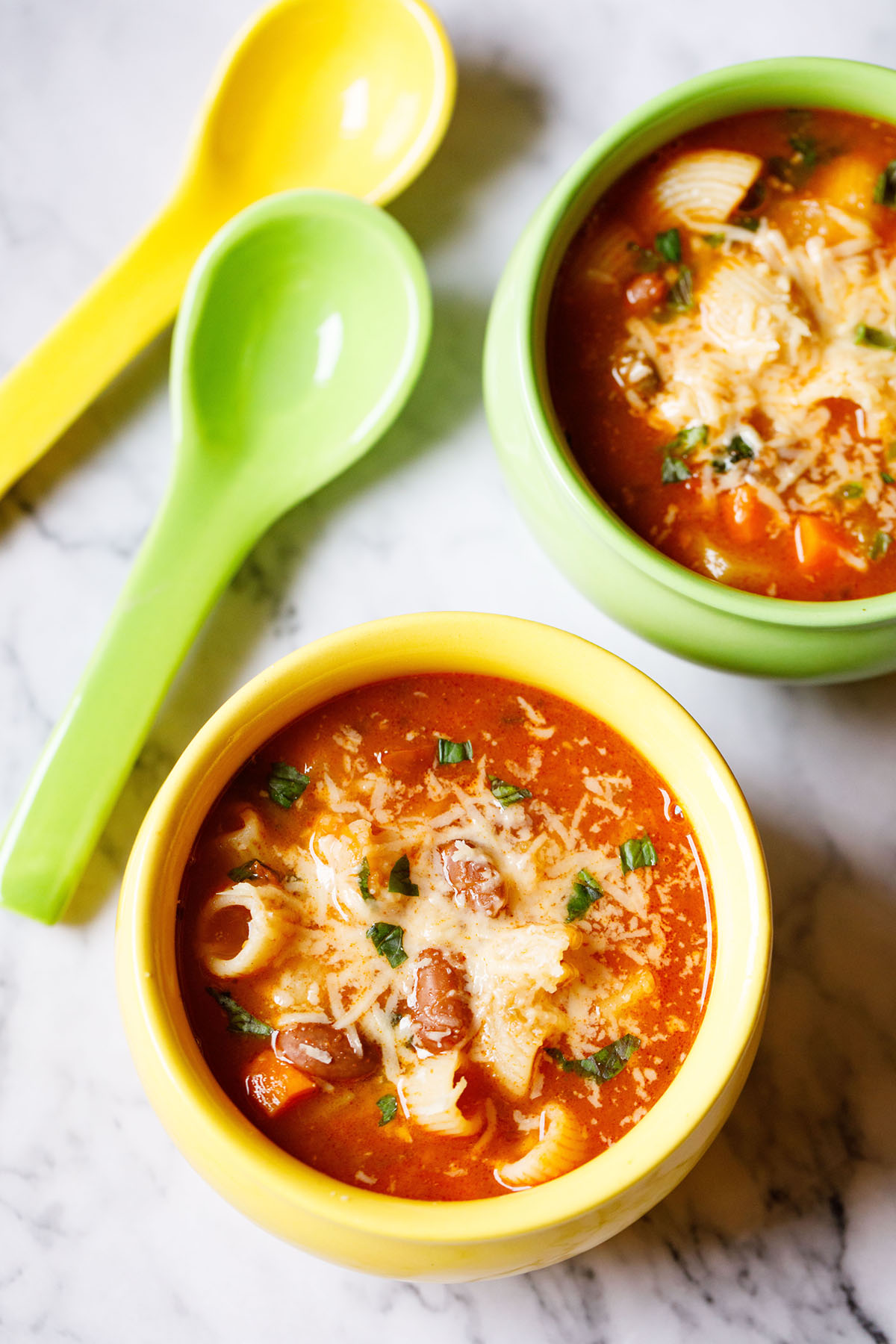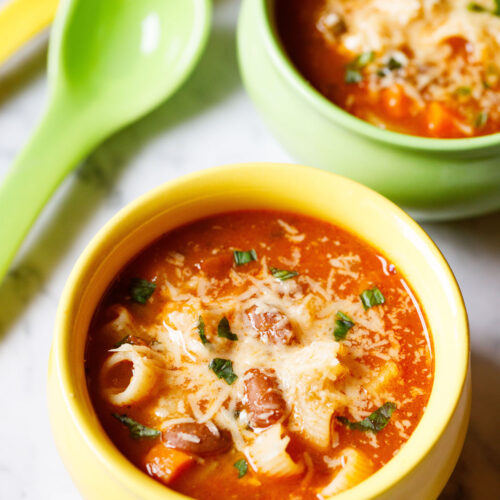What is Minestrone Soup
Minestrone (pronounced min-eh-STROH-nee) is a rustic Italian soup made with vegetables and beans in a tomato based broth. Depending on the recipe, it will also contain pasta, rice, or in some instances, both. While the word itself means “big soup” and simply refers to a thick, stew-like soup that has many vegetables, in modern Italian minestrone has become synonymous with this particular soup. The first instances of minestrone soup date as far back as the 2nd century B.C.E., when Rome conquered Italy. The Roman Empire had access to a wide range of vegetables from all over, and the abundance of vegetables in the Italian diet became commonplace. Vegetable based diets became the norm for people in the lower classes, as meat products were far more expensive. Luckily, the influx of new varieties of veggies made the vegetarian lifestyle more interesting! Anyway, minestrone became a way for peasants to use up leftover vegetables and scraps from other meals to make the most of any purchases. To date, this soup is associated with the style of cooking known as cucina povera, meaning “poor kitchen.” Funnily enough, tomatoes were not part of Italian Cuisine until about the mid-16th century when explorers brought them back from the Americas. Nowadays, tomatoes are nearly synonymous with Italian cuisine and are a necessary component of minestrone soup.
About My Recipe
While Minestrone is known the world over, there isn’t necessarily a set recipe out there. It is more of a template, if you will, and you can add whatever vegetables you happen to have on hand. In fact, I’ve found that it’s a great way to use up any veggies that are aimlessly languishing in your crisper drawer! This delicious meal can therefore be made in myriad ways throughout the year. While the vegetables, beans, and other carbs can vary, onions, celery, carrots and tomatoes are an absolute must. While some might argue the point, I’d also say that a hunk of fresh bread with a little butter is also essential to any minestrone experience, but that’s just me. Aside from that, feel free to use any seasonal (or even frozen) vegetables that you have on hand. Green beans, artichoke hearts, green peas, asparagus, summer squash and greens like kale or spinach are all excellent additions. You also have a lot of flexibility in the bean department. Feel free to use kidney beans, navy beans, white kidney beans (canellini) or great northern beans. Optionally you can even use pinto beans, lima beans or butter beans. Even lentils would do the trick! I personally find dried red kidney beans the easiest to find, so they are my go-to. I soak the beans overnight and cook them in my Instant pot. If you have access, canned beans also work perfectly and cut out a step in the process. If you don’t like beans, feel free to swap in cubes of starchy vegetables. I find that potatoes, sweet potatoes and yams make a fine substitute for pulses. Since I prefer my pasta and my vegetables al dente, I cook the pasta separately and add it to the broth afterwards. While this adds another pan to the process, I find that the texture of the vegetarian minestrone soup recipe benefits from this step. That said, if you are confident in your ability to time the cooking of your veggies to the pasta cooking time, feel free to add the pasta directly to the soup pot.
How to Make Minestrone Soup
While this recipe does have quite a few steps, I promise that none of them are difficult to execute. Simply follow along with me, and before you know it, you’ll have a delicious bowl of rustic Italian soup to enjoy!
Step 1 – Prepare Beans
Tip: If you are using canned beans, you can jump ahead to step 2.
- Sort through your dried beans, removing any damaged beans or small pebbles that might’ve made their way into the bag. Rinse and soak ½ cup dried kidney beans in 2 cups water overnight. Drain all the water and rinse the soaked beans with fresh water. Cook soaked beans in water and salt till they are softened and tender using your favorite method. I have listed 3 options for cooking beans:
- Once the beans are softened and tender, drain them and set aside for later. If including canned kidney beans, add 1.5 cups of the canned beans that have been drained of all the canned liquid, rinsed in fresh water and later drained of the water.
Step 2 – Cook Pasta
- In a pan or pot, take 3 cups water and let it come to a boil. Then add ½ teaspoon salt.
- Add 1 cup elbow macaroni (or any small pasta variety).
- Cook pasta on medium-high heat until al dente. Tip: I recommend you read the package directions for your pasta. Cook times will vary widely depending on the shape and size of the pasta.
- Strain the pasta using a colander or sieve. Cover and set aside.
Step 3 – Sauté Aromatics and Veggies
- Heat 3 tablespoons extra virgin olive oil in heavy bottomed pot (with a lid) over medium heat. Add ½ cup chopped onions, 1.5 teaspoon finely chopped garlic, ¼ cup chopped celery, and 1 bay leaf. Sauté for 3 minutes. Tip: Cut back on dishes by reusing the pot you used to cook your pasta.
- Add ½ cup chopped cauliflower florets, ½ cup chopped carrots, 1 cup chopped potato, ⅓ cup chopped baby corn and ⅓ cup chopped button mushrooms (or substitute roughly 3 cups of sturdy vegetables of choice). Sauté for 5 to 6 minutes stirring at intervals. Tip: As I stated earlier, this recipe is more of a template than something you need to follow to the letter. Use veggies that are in season, or whatever mix of frozen vegetables you happen to have on hand. Just remember, if you use a mix of veggies with different cooking times, add the ones that take more time to cook (e.g. potatoes) earlier in the process, then add faster-cooking veggies (e.g. spinach) last.
Step 4 – Add Tomato Purée and Seasonings
- Add 1.5 cups tomato purée (or crushed tomatoes), ¼ cup tomato paste, ½ teaspoon dried oregano, ½ teaspoon crushed black pepper and salt as per taste. Don’t skimp on the tomato paste! It offers a lot of depth of flavor by lending a bit of umami. Tip: If you want to make your own tomato purée, simply blitz, chopped 3 medium to large tomatoes (300 grams) in a blender until smooth.
- Mix well and cook for one to two minutes. Cooking the tomato paste makes the flavor more intense.
Step 5 – Add Liquid
- Add 4 to 4.5 cups Vegetable Stock (or water). Mix thoroughly. Tip 1: You can adjust the consistency by adding more stock or water, so if you have a starchy blend of veggies that makes the minestrone too thick for your liking, simply add more. Tip 2: Do prefer to include homemade vegetable stock or broth in your minestrone. For packaged veggie stock, opt for low sodium or no sodium stock. Or else simply add water and the taste will still be good.
- Cover the pan and let veggies simmer until fork tender on low to medium-low heat for about 30 to 40 minutes.
- Check a couple of times when the veggies are cooking, ensuring that they don’t overcook. Mushy vegetables are not meant for a minestrone soup recipe! Tip: To avoid having your some of your vegetables end up over- or under-cooked, be sure to cut them into even pieces.
- As soon as the vegetables are fork tender, assemble the soup components.
Step 6 – Assemble Minestrone Soup
- Add the cooked kidney beans. (If using canned beans, add 1.5 cups canned beans drained of all the liquids, rinsed thoroughly in water and drained of the water.)
- Mix and simmer for a minute or more until the beans are warmed through.
- Add the cooked pasta.
- Mix gently and and simmer for a minute or more until the pasta is just warmed through, being careful not to overcook it.
- Switch off the heat and move the pan to a trivet on your countertop. Add ¼ cup chopped basil and ¼ cup grated vegetarian parmesan cheese (optional). Tip: While fresh basil is preferred for its bright color and aroma, feel free to substitute approximately 1 tablespoon of dried basil. (For future calculations, 1 teaspoon of dried herbs is approximately the same as 1 tablespoon of fresh herbs.)
- Stir gently to incorporate. Taste and season as necessary.
- Pour soup in bowls (or mugs!) and serve hot. Garnish with some grated Parmesan cheese and torn basil leaves. Add a drizzle some extra virgin olive oil while serving for a bit of extra richness. Enjoy, preferably with a hunk of crusty bread in tow.
Expert Tips
Please be sure to rate the recipe in the recipe card or leave a comment below if you have made it. For more vegetarian inspirations, Sign Up for my emails or follow me on Instagram, Youtube, Facebook, Pinterest or Twitter. This Minestrone Soup from the archives first published on March 2021 has been updated and republished on April 2023.
